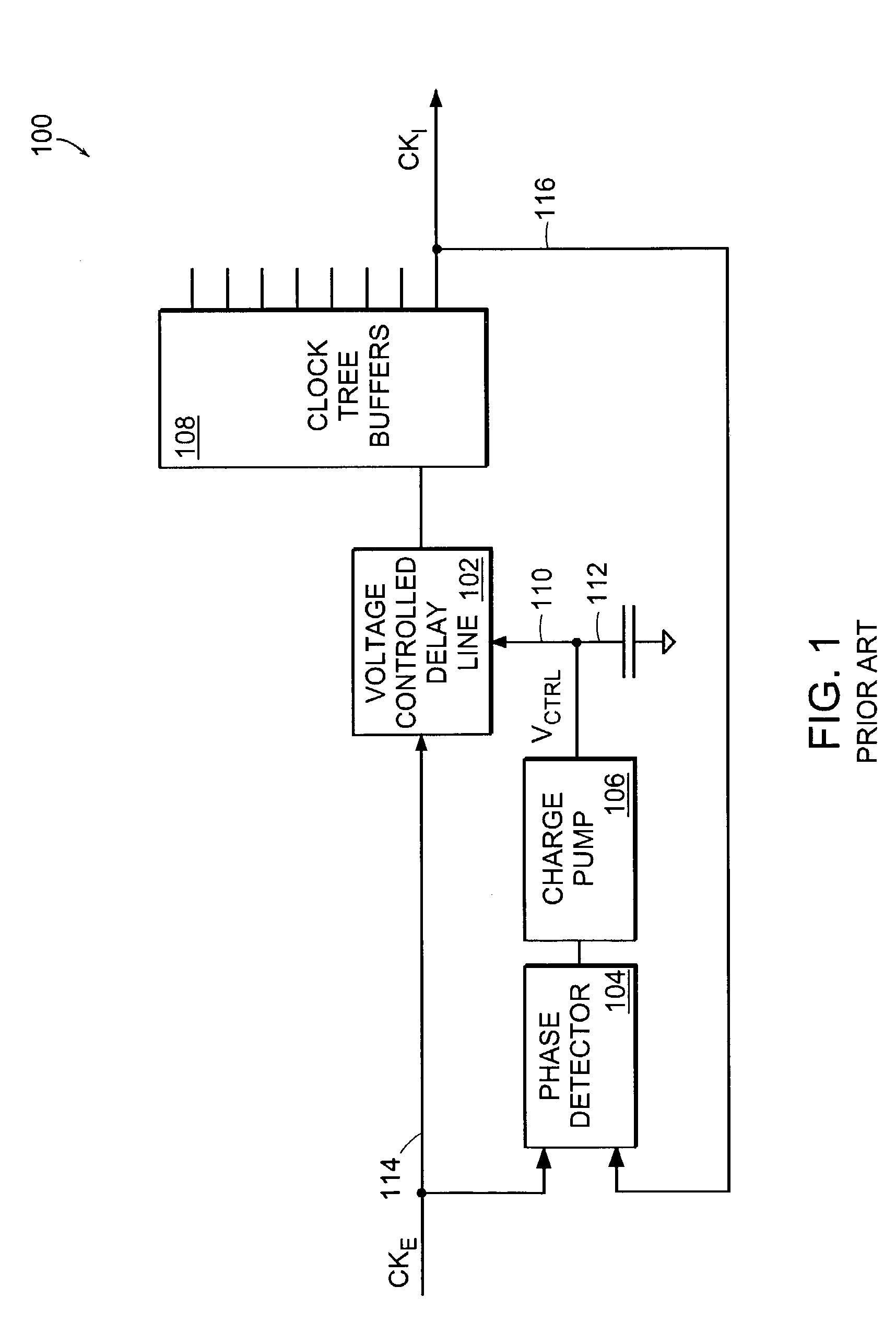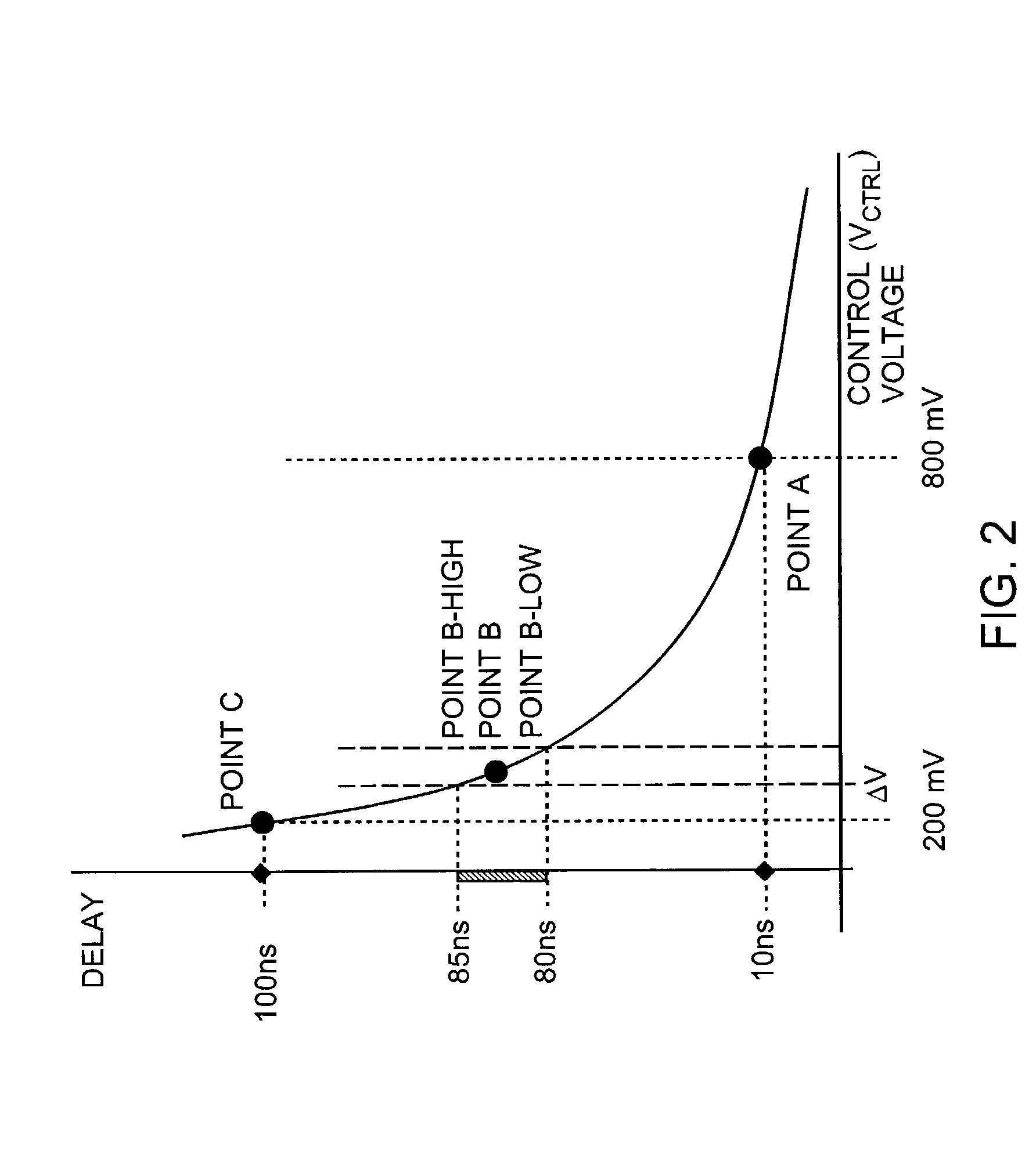Wide frequency range delay locked loop
a delay lock and wide frequency range technology, applied in the direction of synchronous/start-stop system, automatic control of pulses, transmission, etc., can solve the problems of dll instability, long lock time, and varies in performance of analog dlls, and achieve fast lock time, good stability, and high accuracy
- Summary
- Abstract
- Description
- Claims
- Application Information
AI Technical Summary
Benefits of technology
Problems solved by technology
Method used
Image
Examples
Embodiment Construction
[0024]A description of preferred embodiments of the invention follows.
[0025]FIG. 3 is a block diagram of a wide frequency range delay locked loop (DLL) 300 according to the principles of the present invention. The wide frequency range DLL 300 has two domains of operation: a digital domain which includes a digital delay circuit 302 and an analog domain which includes an analog delay circuit 304.
[0026]In a DLL, high accuracy, small silicon area usage and lower power are typically achieved using an analog technique, while good stability and shorter lock times are typically achieved with a digital technique. The wide frequency range DLL 300 combines the two techniques to provide high accuracy, good stability and a fast lock time over a wide frequency range. The digital delay circuit 302 is responsible for coarse phase adjustment during initialization and the analog delay circuit 304 is responsible for fine phase adjustment during normal operation, after coarse phase adjustment is comple...
PUM
 Login to View More
Login to View More Abstract
Description
Claims
Application Information
 Login to View More
Login to View More - R&D
- Intellectual Property
- Life Sciences
- Materials
- Tech Scout
- Unparalleled Data Quality
- Higher Quality Content
- 60% Fewer Hallucinations
Browse by: Latest US Patents, China's latest patents, Technical Efficacy Thesaurus, Application Domain, Technology Topic, Popular Technical Reports.
© 2025 PatSnap. All rights reserved.Legal|Privacy policy|Modern Slavery Act Transparency Statement|Sitemap|About US| Contact US: help@patsnap.com



